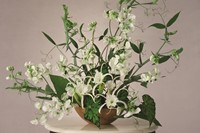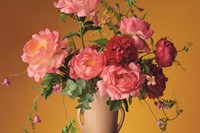Jonathan Anderson collaborates with Steven Meisel on his latest campaign for Loewe, drawing our attention to the author who changed the landscape of floristry
Who? In 1929 Constance Spry opened her first floristry shop, Flower Decoration, having left a teaching role – as well as her son and her abusive first husband – in Ireland the year before. Spry quickly caused a sensation with her unorthodox displays, taking inspiration from the 17th and 18th century Dutch Masters’ still lifes and their unlikely ingredients. One of her first commissions was for a display in the window of Atkinsons, an Old Bond Street perfumery. Here she constructed a huge scene made entirely from humble hedgerow plants that garnered both street-side gawpers and interest from high society. By 1934, Spry was employing 70 people, had opened a larger store on South Audley Street, Mayfair, and had acquired her first book deal of many.
Spry became a household name as she straddled two worlds: her books liberated the home florist, championing modesty and stylistic freedom (the only rules she gave her readers was to be open to every form of beauty – be it a buttercup or a prize rose), while she created impossibly grand and sculptural displays for Cecil Beaton’s home and the nuptials of the Prince of Wales and Wallis Simpson (Spry’s arrangements also lined the processional route and aisles of Westminster Abbey for Queen Elizabeth II’s coronation). Her private life hosted a similar duality and pursuit of freedom, as Constance married Henry ‘Shav’ Spry upon arriving in London but nurtured a four-year love affair with painter Hannah ‘Gluck’ Gluckenstein.
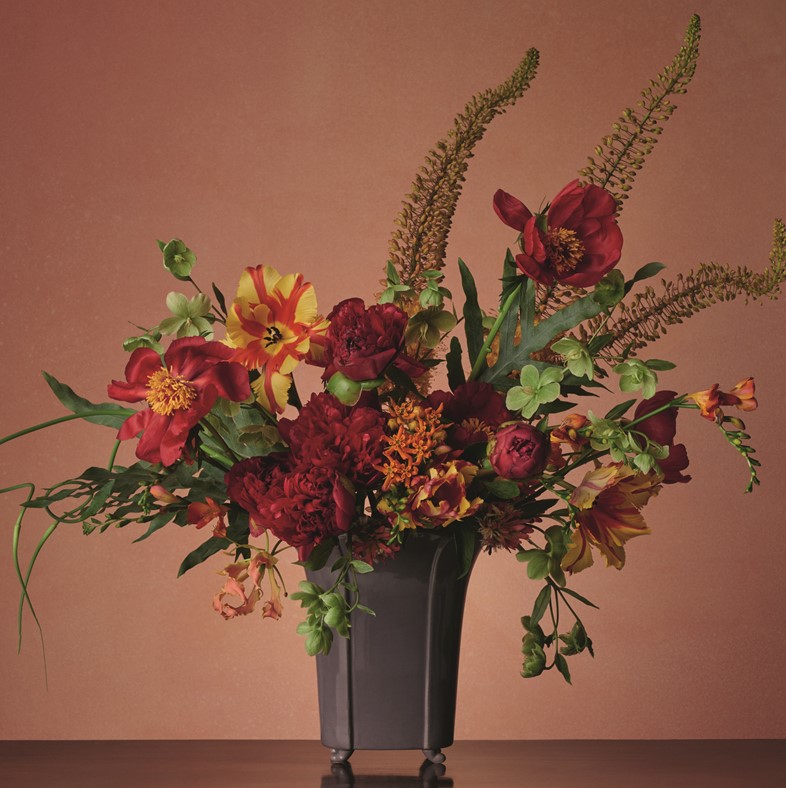
What? It was Spry’s democratic attitude to decoration that broke the mold of floristry forever. Spry’s writing encouraged garden foraging – using whatever one could find to express themselves artistically. Her 1957 book A Millionaire for a Few Pence offered to improve the quality of people’s daily lives with just a few flowers and a little imagination. As such, Spry married kale leaves with vibrant red roses in boutique windows and introduced the use of jam jars as vessels and the joy of a single-stem in a vase. Spry plied her arrangements with hitherto uncelebrated plants like Old Man’s Beard, pussy willow, rhubarb leaves and brown leaves.
Spry’s style tangibly transformed the landscape of floristry and flowers. She designed her own range of sleek, shallow and minimally elegant Art Deco vases for Fulham Pottery, which now hold collectable status. In 1946 she opened a domestic school with her friend and collaborator Rosemary Hume (with whom she also wrote numerous cookbooks) at Winkfield Place. It was here that she dedicated years to cultivating forgotten breeds of antique roses which had gone distinctly out of fashion. Esteemed rose breeder and writer David Austin OBE, famed for creating the first range of commercially available rose breeds, named his maiden line the ‘Constance Spry’ which became one of the most famous of his prized English roses. Though clearly greatly impactful, Spry’s work was the source of much discontent when the Design Museum posed a retrospective exhibition of her floristry in 2004. Two of the museum’s founders – Sir Terence Conran and James Dyson – dismissed her oeuvre as “high-society mimsiness” and both threatened to resign should the exhibit go ahead. Dyson and Conran’s threats were ignored and the exhibition was wildly successful.
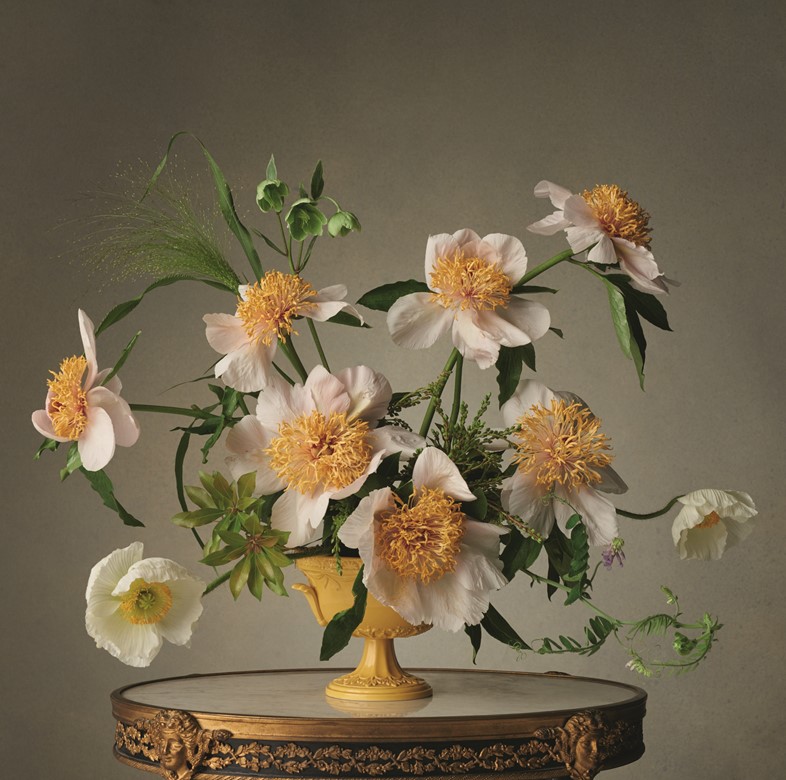
Why? This month, Jonathan Anderson affirms his ongoing admiration of Spry with the launch of his S/S17 campaign for Loewe. Shot by Steven Meisel, a series of 12 painterly floral still lifes usher in the new season across Parisian kiosks, billboards and Instagram feeds alike. In honour of Spry, oxblood peonies are humbled by sloping grasses and glossy laurel leaves; with stark Caravaggio-esque lighting bringing an ethereal mood to our daily commutes. In other photographs, parrot-striped tulips unfurl with the vivacity of Dutch Masters Ambrosius Bosschaert the Elder or Balthasar van der Ast, and English roses are disheveled by branches of falling acorns. “I’m a huge fan of Constance Spry’s work and her relationship with the British painter Gluck,” Anderson tells AnOther. “I think she made flowers into a sculptural form. I showed [her work] to Meisel and he was excited about it. For me, it’s an open dialogue where myself and Steven can work together and I want to be able to learn something. It’s a collaborative dialogue.”
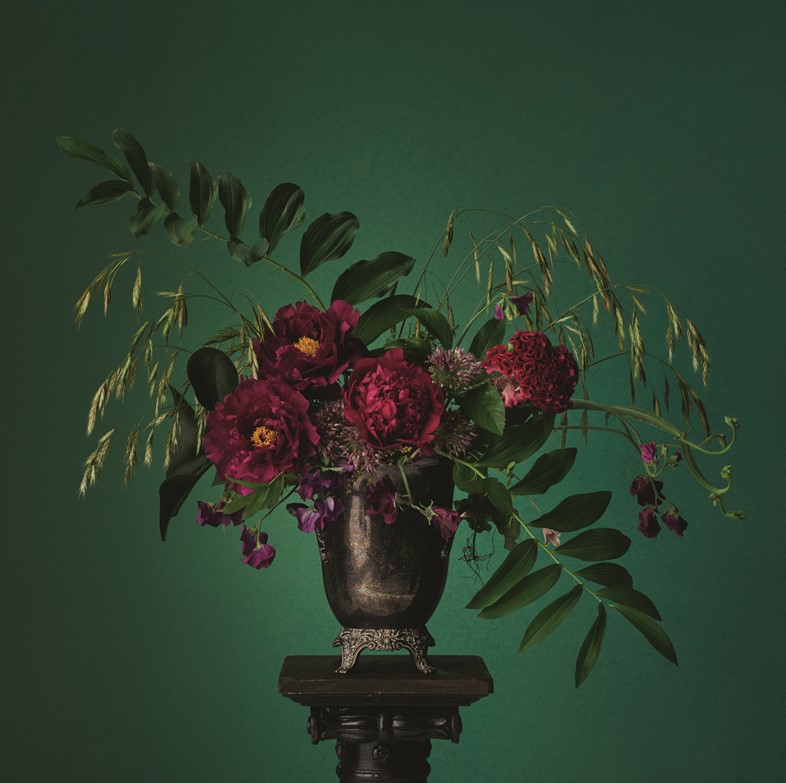
The campaign is not the first time Anderson has paid homage to the famed florist and author: the newly redecorated and ultra-Modernist Loewe store in Goya, Madrid, is host to a Constance Spry-inspired flower store where her smooth-lined pottery fills the walls. Back in November last year, the designer previewed these collaborative images at Madrid’s Royal Botanical Gardens. Just as Spry’s displays offered country-wide inspiration, Meisel and Anderson’s floral masterpieces are able to be enjoyed by everyone.

